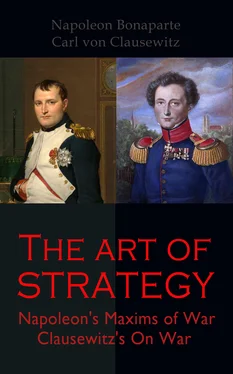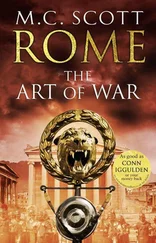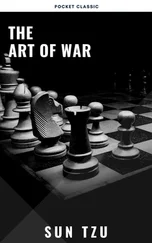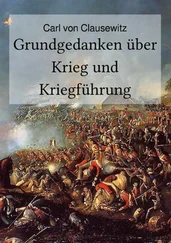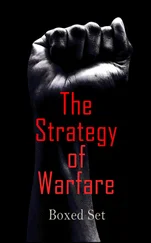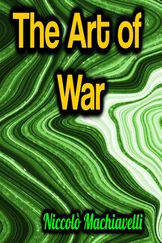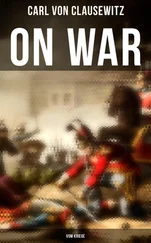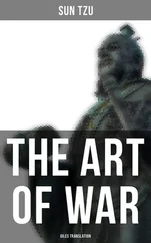In the art of sieges we first perceive a certain degree of guidance of the combat, something of the action of the intellectual faculties upon the material forces placed under their control, but generally only so far that it very soon embodied itself again in new material forms, such as approaches, trenches, counter-approaches, batteries, &c., and every step which this action of the higher faculties took was marked by some such result; it was only the thread that was required on which to string these material inventions in order. As the intellect can hardly manifest itself in this kind of War, except in such things, so therefore nearly all that was necessary was done in that way.
3. THEN TACTICS TRIED TO FIND ITS WAY IN THE SAME DIRECTION.
Afterwards tactics attempted to give to the mechanism of its joints the character of a general disposition, built upon the peculiar properties of the instrument, which character leads indeed to the battle-field, but instead of leading to the free activity of mind, leads to an Army made like an automaton by its rigid formations and orders of battle, which, movable only by the word of command, is intended to unwind its activities like a piece of clockwork.
4. THE REAL CONDUCT OF WAR ONLY MADE ITS APPEARANCE INCIDENTALLY AND INCOGNITO.
The conduct of War properly so called, that is, a use of the prepared means adapted to the most special requirements, was not considered as any suitable subject for theory, but one which should be left to natural talents alone. By degrees, as War passed from the hand-to-hand encounters of the middle ages into a more regular and systematic form, stray reflections on this point also forced themselves into men’s minds, but they mostly appeared only incidentally in memoirs and narratives, and in a certain measure incognito.
5. REFLECTIONS ON MILITARY EVENTS BROUGHT ABOUT THE WANT OF A THEORY.
As contemplation on War continually increased, and its history every day assumed more of a critical character, the urgent want appeared of the support of fixed maxims and rules, in order that in the controversies naturally arising about military events the war of opinions might be brought to some one point. This whirl of opinions, which neither revolved on any central pivot nor according to any appreciable laws, could not but be very distasteful to people’s minds.
6. ENDEAVOURS TO ESTABLISH A POSITIVE THEORY.
There arose, therefore, an endeavour to establish maxims, rules, and even systems for the conduct of War. By this the attainment of a positive object was proposed, without taking into view the endless difficulties which the conduct of War presents in that respect. The conduct of War, as we have shown, has no definite limits in any direction, while every system has the circumscribing nature of a synthesis, from which results an irreconcileable opposition between such a theory and practice.
7. LIMITATION TO MATERIAL OBJECTS.
Writers on theory felt the difficulty of the subject soon enough, and thought themselves entitled to get rid of it by directing their maxims and systems only upon material things and a one-sided activity. Their aim was to reach results, as in the science for the preparation for War, entirely certain and positive, and therefore only to take into consideration that which could be made matter of calculation.
8. SUPERIORITY OF NUMBERS.
The superiority in numbers being a material condition, it was chosen from amongst all the factors required to produce victory, because it could be brought under mathematical laws through combinations of time and space. It was thought possible to leave out of sight all other circumstances, by supposing them to be equal on each side, and therefore to neutralise one another. This would have been very well if it had been done to gain a preliminary knowledge of this one factor, according to its relations, but to make it a rule for ever to consider superiority of numbers as the sole law; to see the whole secret of the Art of War in the formula, in a certain time, at a certain point, to bring up superior masses —was a restriction overruled by the force of realities.
9. VICTUALLING OF TROOPS.
By one theoretical school an attempt was made to systematise another material element also, by making the subsistence of troops, according to a previously established organism of the Army, the supreme legislator in the higher conduct of War. In this way certainly they arrived at definite figures, but at figures which rested on a number of arbitrary calculations, and which therefore could not stand the test of practical application.
An ingenious author tried to concentrate in a single conception, that of a BASE, a whole host of objects amongst which sundry relations even with immaterial forces found their way in as well. The list comprised the subsistence of the troops, the keeping them complete in numbers and equipment, the security of communications with the home country, lastly, the security of retreat in case it became necessary; and, first of all, he proposed to substitute this conception of a base for all these things; then for the base itself to substitute its own length (extent); and, last of all, to substitute the angle formed by the army with this base: all this was done to obtain a pure geometrical result utterly useless. This last is, in fact, unavoidable, if we reflect that none of these substitutions could be made without violating truth and leaving out some of the things contained in the original conception. The idea of a base is a real necessity for strategy, and to have conceived it is meritorious; but to make such a use of it as we have depicted is completely inadmissible, and could not but lead to partial conclusions which have forced these theorists into a direction opposed to common sense, namely, to a belief in the decisive effect of the enveloping form of attack.
As a reaction against this false direction, another geometrical principle, that of the so-called interior lines, was then elevated to the throne. Although this principle rests on a sound foundation, on the truth that the combat is the only effectual means in War, still it is, just on account of its purely geometrical nature, nothing but another case of one-sided theory which can never gain ascendency in the real world.
12. ALL THESE ATTEMPTS ARE OPEN TO OBJECTION.
All these attempts at theory are only to be considered in their analytical part as progress in the province of truth, but in their synthetical part, in their precepts and rules, they are quite unserviceable.
They strive after determinate quantities, whilst in War all is undetermined, and the calculation has always to be made with varying quantities.
They direct the attention only upon material forces, while the whole military action is penetrated throughout by intelligent forces and their effects.
They only pay regard to activity on one side, whilst War is a constant state of reciprocal action, the effects of which are mutual.
13. AS A RULE THEY EXCLUDE GENIUS.
All that was not attainable by such miserable philosophy, the offspring of partial views, lay outside the precincts of science—and was the field of genius, which RAISES ITSELF ABOVE RULES.
Pity the warrior who is contented to crawl about in this beggardom of rules, which are too bad for genius, over which it can set itself superior, over which it can perchance make merry! What genius does must be the best of all rules, and theory cannot do better than to show how and why it is so.
Pity the theory which sets itself in opposition to the mind! It cannot repair this contradiction by any humility, and the humbler it is so much the sooner will ridicule and contempt drive it out of real life.
Читать дальше
